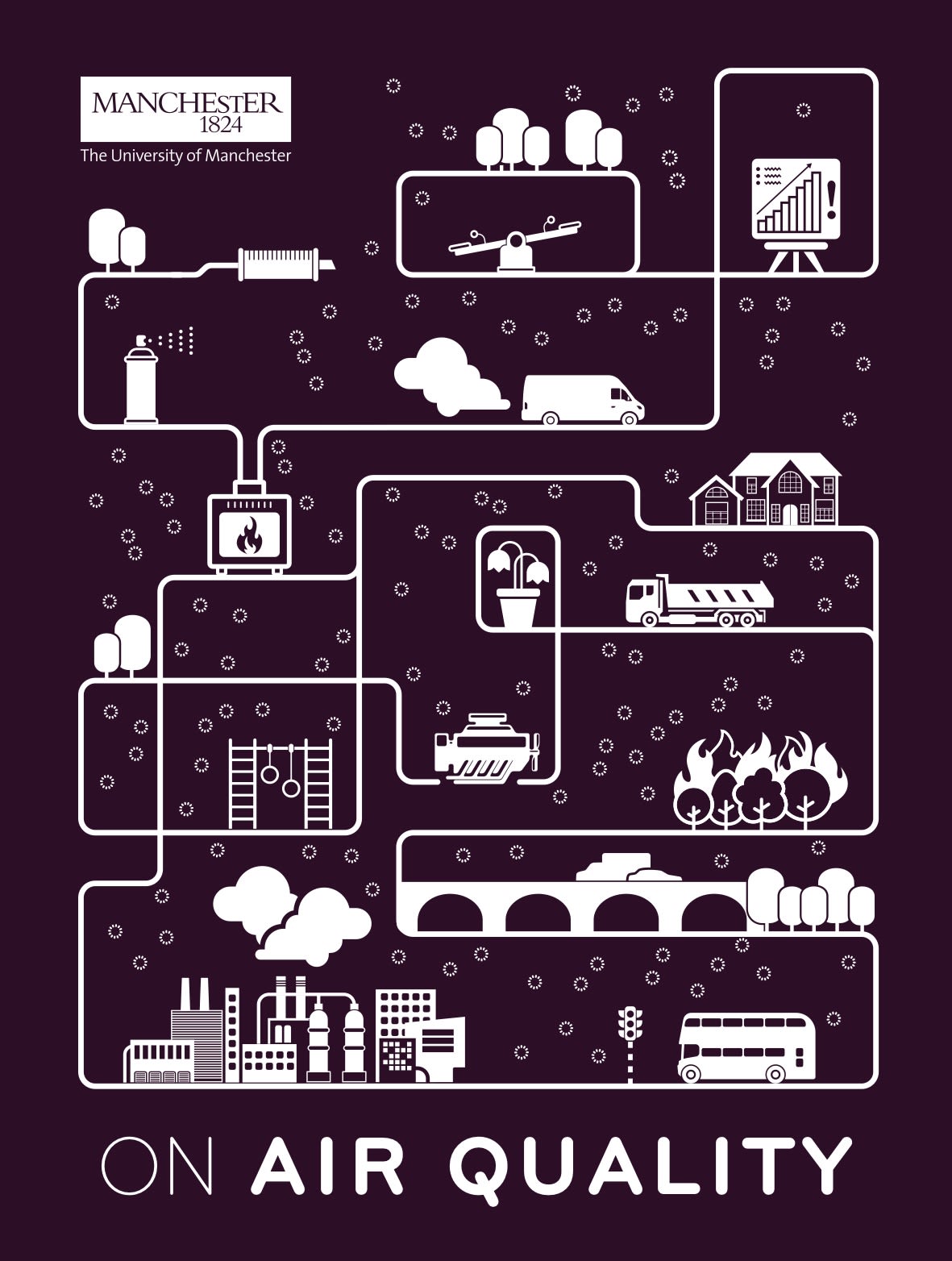On Air Quality
Analysis and ideas on tackling air pollution

Foreword
Mary Creagh
We’ve known for a long time that air pollution is bad for our health and for the environment. The Great Smog of 1952 led to the deaths of 4,000 people in London; its legacy was the Clean Air Act of 1956. In the 1980s scientists told us about acid rain, then came greenhouse gas emissions from chlorofluorocarbons from refrigerants and methane from agriculture. Now, research tells us about the harmful effects of exposure to particulate matter from tyres and stoves. Each time, knowledge has ultimately informed the policy and legislation needed to take appropriate action.
This is why we welcome this timely publication. In it, experts in their respective fields highlight, for example, the disproportionate impact of poor air quality on low-income communities and how it acts as a catalyst for cognitive decline in older people. We find out about the importance of modelling changes in air pollution to city spaces as the way we travel changes. Most important of all is the call for joined up thinking. We need decision-makers across national and local government, public and private sectors, to join together with academia to create policies that are fit for purpose.
COVID-19 has changed how we live and work. It has also shown how it is possible for Government to act swiftly and decisively, and for behaviour change to occur at scale. Air quality should be at the top of everyone’s agenda. Whether it’s promoting walking and cycling or implementing School Streets, we all have our part to play. The time for action is now. Let’s get to work.
Mary Creagh is the Chief Executive of Living Streets, the charity for everyday walking. She has over 20 years’ experience campaigning for environmental and social justice, as a Labour Councillor, MP, Government Whip, Shadow Cabinet Minister and Select Committee Chair.


An opportunity to lead on tackling a global problem
Professor Hugh Coe

There is widespread recognition of the role air pollution plays as a globally important cause of increases in non-communicable diseases including stroke, heart disease, and chronic obstructive pulmonary disease. It has also been shown to impair cognitive function and childhood development. The Global Burden of Disease project estimated in 2017 that 3.4 million premature deaths globally could be attributed to outdoor air pollution and in 2019, 2.31 million global deaths could be attributed to household, or indoor air pollution.
Addressing poor air is central to meeting many sustainable development goals and should be embedded in future urban planning and public healthcare policy. Rapid urbanisation leads to large numbers of people living in or very close to hotspots for air pollution – resulting in chronic exposure. Poor air quality can also exacerbate inequalities since low-income urban communities have the highest levels of exposure, often use cooking and heating methods that increase air pollution inside homes and experience poor health outcomes that air pollution exacerbates.
Where does global air pollution come from?
Historically, coal combustion provided the power requirements of Europe and North America and has fuelled much of the economic development of China and India. Coal is a dirty fuel. In addition to releasing large amounts of CO2 per mass of fuel burned, its combustion produces substantial particulate matter (PM). During COVID-19, a reduction in PM driven by the reduction in industrial capacity led to the Himalayas being clearly visible for the first time in living memory from many cities across the Indo-Gangetic plain. Such substantial improvements were not seen across Europe, possibly because of different mitigation strategies to curb the spread of the virus, but also a result of the very different air pollution environments.
Vehicles produce oxides of nitrogen (NOx) from the combustion of air in the engine. A fraction of this is in the form of nitrogen dioxide which is toxic. There is significant variability in the emissions of NOx in cities across the globe. Across Europe, diesel engines power a high proportion of cars on the road as well as nearly all heavy goods and passenger transport vehicles. The widespread use of diesel engines is a result of policy stimuli to increase fuel economy and reduce CO2 emissions. These policies failed to take into account the fact that higher temperatures and pressures in diesel engines lead to much greater NOx production. This is not the case in North America or China where gasoline engines dominate. There are therefore important differences even between the main pollutants across different regions. Policies to mitigate pollution need to be developed at the regional scale.
Whole urban areas can be greatly impacted by regional sources of pollution. Across West Africa and SE Asia, cities experience widespread poor air quality resulting from agricultural burning that produces vast quantities of smoke particles. For many poor farmers, end-of-season agricultural waste burning offers a very cheap way of returning nutrients to the soil. This practice has been continuing for centuries but as the need for food rises it is an ever-increasing problem. Addressing these sources involves policies directed towards the agriculture sector rather than energy producers, and will require substantial cultural change since it requires millions of small scale farmers to change their approach to farming. Air pollutants released by these practices can undergo long-range transportation that may often be across national boundaries, further hampering the ability of national and regional governments to address air quality since you cannot control what you haven’t produced.
Societal practices can also have a huge impact on air pollution. The lack of public waste disposal in many countries leads to large amounts of open waste burning, including plastics that are toxic when burned. Developing methods of sustainable use of materials and improving public waste collection to address problems such as this can have a large number of co-benefits, addressing a wide range of societal problems including air quality.
Indoor air pollution has improved globally but in many countries, particularly in rural populations, indoor cooking and heating that uses wood and solid waste fuels is a major health risk. The effects are more greatly felt by the poorest in society, by the female population, the elderly and the young, exacerbating inequalities at a local level.
NOx is directly emitted and policies can be implemented to effectively reduce it. However this can mean that ozone, a toxic gas that is rapidly removed when NOx concentrations are high close to source but is formed by reactions at lower NOx levels downwind of cities, will increase closer to urban centres. This is already being observed in cities across China. Many of the world’s rapidly growing cities are in countries close to the equator where high temperatures and intense sunshine can lead to very different air pollution scenarios than in cities further towards the poles. Surprisingly high ozone concentrations are observed in Indian cities, resulting from a combination of chemistry and emissions that are not well understood. The same chemistry also forms PM in the atmosphere and current predictive capability is poor. It is essential that policy development is informed by sound knowledge of air pollution science to avoid unintended consequences.
A collaborative approach to finding solutions to combat the air pollution problem
As the world seeks sustainable energy solutions, strives to meet food supply demands and works to build sustainable future cities, pathways can be taken to greatly improve air quality. However, this is not a given. We would do very well to make sure that as we seek to deliver solutions to the major challenges of the 21st century, we do not do so by creating further health problems for the world’s population by adding harmful emissions to our atmosphere.
International communities of researchers have come together very effectively over the last decade to address these questions, bringing together teams of atmospheric scientists, health professionals and policy makers to address the problem holistically. The UK has been a leader in such areas of international collaboration. The University of Manchester has led and participated in large consortia helping to ensure new scientific knowledge is converted into policy development. Projects include working alongside Chinese scientists in Beijing; collaborating with Indian researchers in Delhi; participating in a variety of studies across SE Asia and Africa to address urban air quality across the globe. This joint working – combining expertise, capability and local knowledge – is vital to underpin the development of regional solutions to the challenging air pollution problem.
Overseas development aid funding, managed through UKRI, has been leveraged to address these problems over the past decade and used to build these international partnerships. These investments have significant benefits to the UK. Many UK businesses are leaders in the fields of urban and infrastructural planning and development and also in designing solutions to monitor air quality to inform local and national policy makers. Such expertise has grown together with the research base, benefitting from new tools and approaches; the training of air pollution and public health researchers; and from the network of international connections associated with the research.
Urban growth, pollution and human health impacts are some of the greatest challenges facing rapidly developing countries who represent some of the largest global growth markets for the UK. Building partnerships that benefit not only mutual industrial growth but also stimulate social transition through rapid change would surely help broker stronger working relationships for the UK across the globe. This year, the UK has announced that it will significantly curtail its spending on scientific research in support of overseas development aid. Whilst there are major challenges to be faced post-pandemic and post-Brexit, the UK would do well not to lose its leadership in solving global problems such as air pollution. Continuing to facilitate the co-development of partnerships to address the global air quality challenge through the development of regionally targeted solutions will convey numerous benefits to the UK.
Hugh Coe is Head of School and Professor of Atmospheric Composition at The University of Manchester and Chair of the UK Local Organising Committee for the Future Earth Global Research Project International Global Atmospheric Chemistry (IGAC). He also chairs the joint NERC/Met Office FAAM aircraft operations committee and is a current member of the NERC FAAM Board.

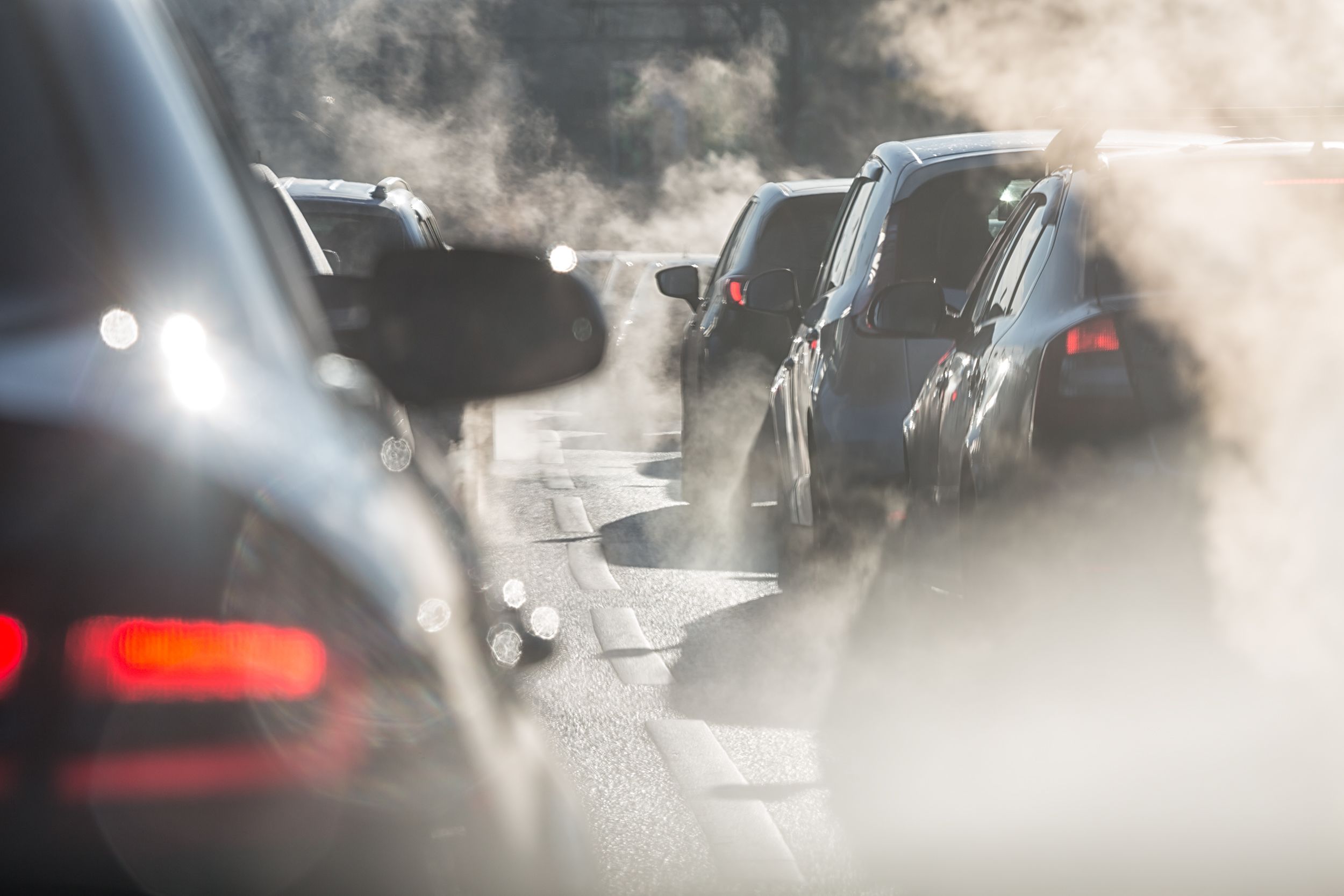

Preventing cognitive decline in children
Professor Martie Van Tongeren

Exposure to air pollution from both outdoor and indoor sources is associated with an ever-growing list of health problems, including asthma and other respiratory diseases. More recently it has become clear that air pollution also has significant effects on the brain. These effects can result in cognitive impairments such as ADHD, learning disabilities, depression and dementia. Pollutants can transfer to the bloodstream in the lungs and travel to other parts of the body including the brain or may travel directly to the brain from the nose through the olfactory nerve. The effects of air pollution exposure on brain health have been observed at different life stages. Children and the elderly face a considerably higher risk of neurological impacts resulting from air pollutants. There is an urgent need to review and increase the methods available to us for reducing air pollution exposure for the most vulnerable.
Children are more at risk of exposure to air pollution and are more vulnerable to its effects in comparison to adults. Children breathe more air per unit of body size because they have a higher breathing rate and are more physically active. Children spend up to eight hours a day at school; therefore, schools represent an important location for interventions aimed at reducing air pollution exposure. A study commissioned by Asthma UK showed that more than 25% of all British schools and colleges are surrounded by ‘dangerously high’ levels of air pollution. The main source of air pollutants around schools are traffic-related. Traffic emissions include factors such as engine exhaust and brake and tyre wear. It is estimated that 30% of particulate matter in European cities comes from road transport. Road transportation is also responsible for the release of other potentially harmful pollutants including polycyclic aromatic hydrocarbons (PAHs) and nitrogen oxides (NOx).
Impacts on cognitive development in children
The University of Manchester recently reviewed the scientific literature to investigate the effect of air pollution on the cognitive performance of primary school children. The results of this study indicate that exposure to air pollution can have a negative impact on cognitive functioning in children. Specifically, exposure to traffic related air pollutants such as nitrogen dioxide (NO2) and particulate matter (PM2.5) can adversely affects working memory and attention control. Working memory is the ability to keep information in mind temporarily and to use it for the completion of mental tasks and attention control is the ability to focus attention on specific stimuli or a wider goal for an extended period, and to ignore distractions.
Based on the evidence from the literature we developed models that show that if outdoor pollution around schools in Greater Manchester increased by 20%, the rate of development of working memory would slow down by around 6%. This suggests that a 20% increase in outdoor air pollution could slow down the rate of development among children by around three weeks in a 12-month period. If pollution increased by 50%, this slow-down is around 15%, equivalent to around seven weeks in a 12-month period. We observe similar predicted effects for increases in indoor air pollution; a 20% increase in indoor air pollution slows down the growth of working memory by around 5%. We also show that the opposite is also likely to occur – that a reduction in pollution in and around schools will lead to an improvement in children’s working memory.
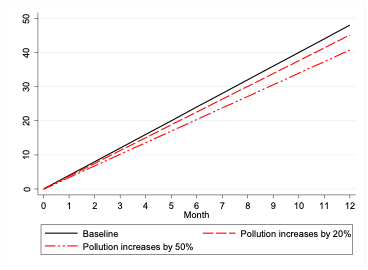
Graph showing the correlation between increasing pollution and the decrease in development of working memory
Graph showing the correlation between increasing pollution and the decrease in development of working memory
Both attention control and working memory have rapid trajectories of development during childhood. These skills are essential for effective learning in schools, and levels of working memory in particular have been found to predict later academic achievement. Air pollution appears to hamper this developmental trajectory, especially when assessing the relation of pollutant exposure and working memory over longer periods of time. As well as respiratory and cardiovascular health impacts, children facing sustained exposure to air pollution may therefore also see a decrease in cognitive development with knock-on effects in academic achievement.
There are also serious concerns that exposure to air pollution in this critical time window of childhood development can have serious neurodegenerative impacts in later life. Results from a recent paper following a cohort of people in Scotland from their birth in 1936, suggested very early life exposures to air pollutants was linked with worse change in IQ between the ages of 11 and 70.
Protecting children through policy
There is urgent need for policy interventions to reduce exposure to traffic-related air pollutants, from national and local governments, and from schools themselves. The government funds local projects to improve air quality through DEFRA’s air quality grant programme. While it has awarded considerable funding, it should be reviewed to ensure competition for grants isn’t negatively impacting some local authorities.
In London, the Mayor’s school air quality audit programme was a positive step in quantifying the scale of the air pollution problem. 50 primary schools in the city’s most polluted areas were audited to determine ways to reduce emissions and exposure. Recommendations from the audit include:
- Moving school entrances and play areas away from busy roads, coupled with local road changes, restricting the most polluting vehicles around schools.
- Adding green infrastructure like ‘barrier bushes’ along busy roads and in playgrounds to help filter fumes.
- Promoting walk and cycle to school initiatives and introducing 'no engine idling' schemes to reduce emissions from the school run.
- Reducing emissions from boilers, kitchens and other indoor sources.
This audit programme and resulting recommendations should be implemented in cities nationwide.
The recent Clean Air for Schools Framework from Global Action Plan is another positive initiative that should be expanded and promoted. The free, online tool offers guidance to help every school create a tailored clean air action plan to tackle air pollution in and around the school. The framework requires the coordinated efforts of schools and local authorities and should be endorsed across the UK.
Other actions schools can take to help combat the air pollution problem include projects to raise awareness of air quality. There are several ways of linking air quality to the national curriculum. Doncaster's Fresh Air website offers the chance for schools to monitor their air quality around the school grounds using NO2 diffusion tubes and provides downloadable activity sheets to help students learn about air quality. CLAIRE – Sustainable Chiltern is another highly interactive resource, with sections on ‘fun experiments’, artwork, puzzles page, and ‘Tips’ to improve air quality.
Such initiatives help promote the importance of combatting the air pollution problem, thus helping pressure governments into further action and encouraging air quality friendly behaviour such as walk to school initiatives.
There are a range of interventions that can and must be made to protect children in their critical developmental years. Local authorities and schools must work closely to minimise air pollution exposure, protecting the physical health and cognitive functioning of children and preventing significant impacts on society and the NHS from neurodegenerative diseases further down the line.
Martie van Tongeren is Professor of Occupational and Environmental Health at The University of Manchester.
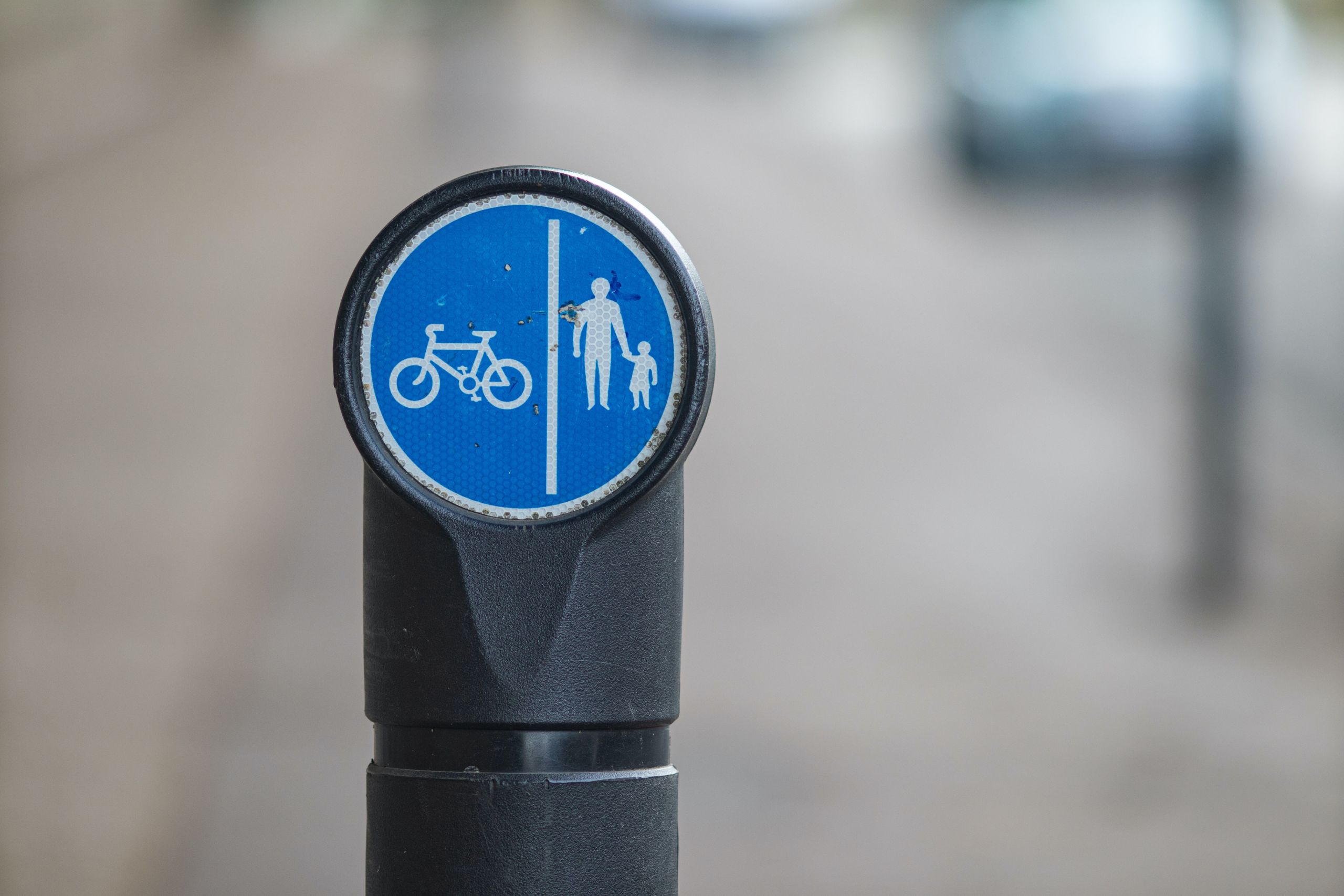

Joining up policy on air quality and greenhouse gas emissions
Professor Grant Allen

The core objectives of reducing greenhouse gas (GHG) emissions and improving air quality are very closely linked. Changes in either are often directly related to the other as their main causes are typically the same. For example, petrol vehicles are a source of CO2 (a greenhouse gas), as well as a source of pollutants affecting air quality such as volatile organic compounds (VOCs) and particulate matter, whilst diesel cars are also a source of NOx – a pollutant known to adversely affect health which the UK Government is legally committed to reducing. Co-emission of GHGs and pollutants affecting air quality is typical for any combustion source, including moorland fires. Improving air quality and reducing greenhouse gas emissions are often (but not always) co-benefits of each other. Aligning these two objectives more closely in terms of policy and regulation may result in much improved outcomes.
In the UK, greenhouse gas emissions policy is broadly within the remit of BEIS, whereas air quality policy is within the remit of DEFRA. Although BEIS and DEFRA coordinate advice on GHG emissions reporting, currently the two departments do not formally coordinate on air quality and neither co-considers the policy impacts of both air quality and GHG emission. This division is unnecessary and problematic. There is a definite need for joined-up policymaking: cross-fertilisation of inter-departmental and regulatory expertise could help simultaneously tackle these mutually and directly related objectives in an aligned framework.
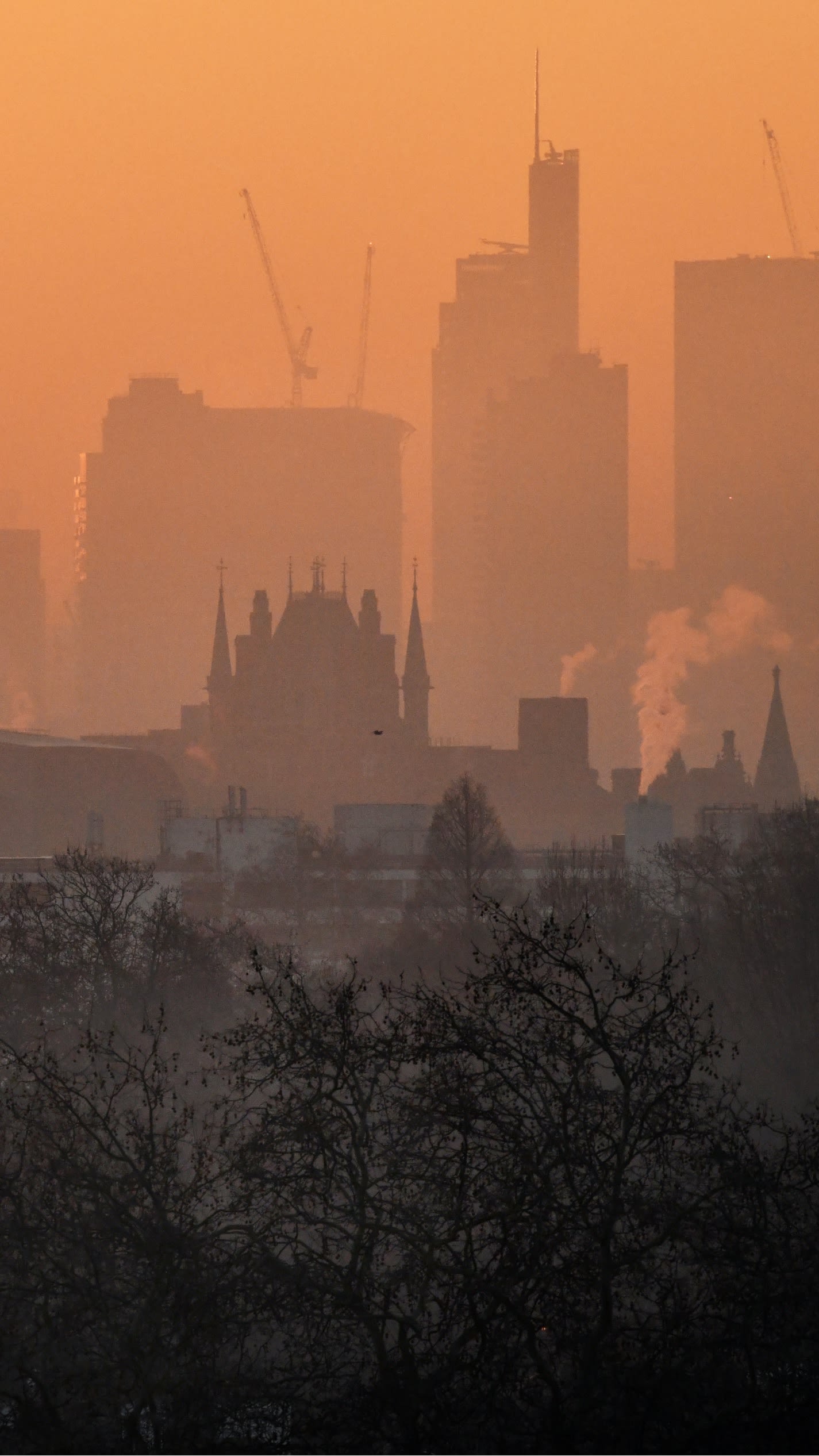
Emissions flux vs Concentration thresholds
The UK has committed to an ambitious and world-leading Net Zero agenda by 2050. The focus of policy in this context is on “fluxes” of greenhouse gases – the net annual carbon-equivalent mass emitted and sequestered nationally. Natural ecosystem services (carbon sinks), targeted interventions on industrial activity-related emissions, and carbon capture and storage are all important terms in achieving this national net zero sum. Policies that reduce GHG emissions will invariably lead to improvements in air quality and vice versa, but these co-benefits are not currently co-considered and quantified. The planned electrification of the UK vehicle fleet and phase-out of new petrol and diesel cars by 2030 is an obvious co-benefit, as might be a transition from natural gas to hydrogen. However, residual air quality impacts may remain, such as particulate matter associated with brake and tyre wear.
There is a subtle difference in the approach to policymaking for air quality improvement. Air quality policy focuses on ambient concentration thresholds rather than emission fluxes, by virtue of proven health impacts at elevated concentrations of pollutants, especially in urban environments. Flux and concentration of any atmospheric pollutant are intimately linked – related directly as a function of chemistry and dispersion in the atmosphere. Put simply, reducing fluxes can reduce pollutant concentrations. The current focus on meeting air quality concentration thresholds has led to policy interventions at local level. These include managing traffic flow, road design and siting of industry, to maximise pollutant dispersion and minimise local concentrations. However, these measures don’t explicitly consider emission fluxes, or seek to minimise the primary sources of pollution.
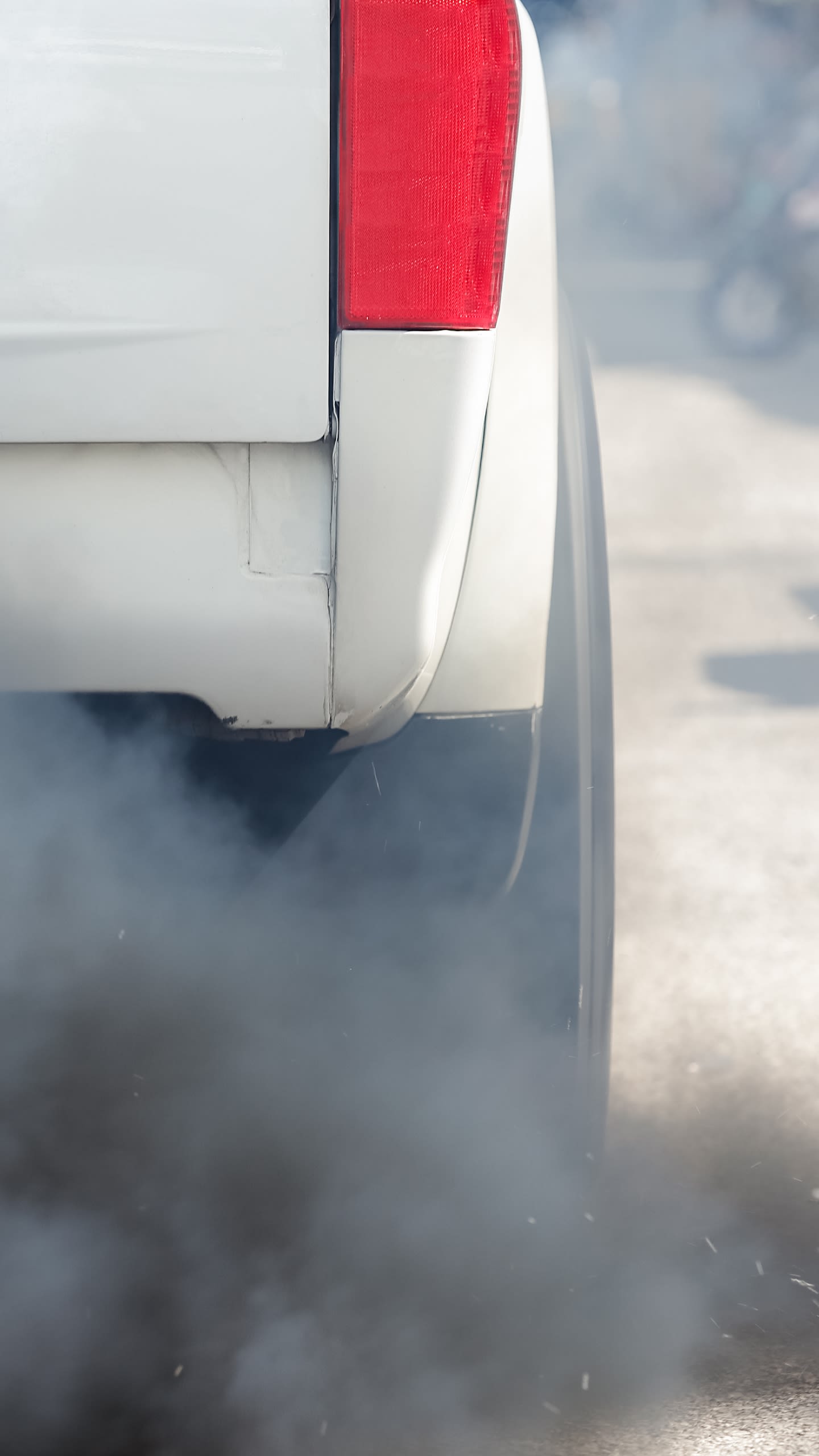
Lessons from the diesel car scandal
To maximise the co-benefits of GHG emissions-reduction and air quality improvement, we should develop a common policy framework that takes into account minimising fluxes of both GHGs and air pollutants, and not solely minimising pollutant concentrations. Considering both objectives simultaneously could optimise policy efficiency and outcomes. However, when either is considered in complete isolation, the other could fail spectacularly.
A prescient example of this is the diesel car scandal, representing a failure of Government policy to recognise the significant impact of increased NOx emissions from otherwise less carbon-intensive diesel cars. A prioritised drive to reduce carbon emissions led to active policies to promote diesel cars over petrol, including subsidies to purchase them. Although diesel cars do emit less CO2 per mile of travel, they also emit NOx unlike petrol vehicles. This policy has undoubtedly contributed to poorer urban air quality since it was introduced and will now take time to reverse, affecting the health of exposed populations in the meantime. A further pressing example is the current rise in popularity of domestic wood-burning stoves. Wood is considered a carbon-neutral fuel source, so this can reduce household carbon footprints if used for heating instead of gas or electricity. However, wood burning can also be a major source of particulate pollution.
Problems also arise if only air quality concentrations are considered and not fluxes of pollutants. For example, an efficient way to reduce local urban air pollutant concentrations may be to divert vehicles over many additional miles, dispersing emissions away from local hotspots. Clearly such an approach may lead to an increase in the CO2 emitted due to the additional miles travelled. These contrasting examples illustrate the continuing real-world effects of a lack of a policy prioritisation framework for GHGs and air quality. There is a clear need for more joined-up thinking in government to prevent local and national policies working against each other and achieve optimal outcomes for both air quality and GHG emission reduction.
A call for joined-up thinking
At present, the UK has no policy framework that co-considers GHG emissions and air pollutant concentrations in planning regulations. Reduction of GHG flux represents a systemic threat to the planet as whole, whereas elevated air pollutant concentrations represent a local health threat to exposed populations. It is clearly challenging, but vitally important to decide how such issues should be prioritised in policy. These two environmental aspects are not mutually-exclusive – quite the opposite. There is scope to maximise the co-benefits of net-zero and air quality, but only if both are considered simultaneously, examined from a viewpoint of emitted flux and weighted (then prioritised) by their respective impacts.
Having an interdepartmental disconnect on air quality and GHG emissions can result in counteracting and counterproductive policy, as exemplified by past failures concerning diesel cars. Collaborative discussion of such a policy framework should be a priority for BEIS and DEFRA, ideally resulting in new guidance to planning agencies and regulators so that optimal outcomes on both air quality and GHG emissions can be achieved. Leadership and coordination of such an initiative may well reside more naturally within DEFRA currently, but with an established cross-departmental group to ensure joined up thinking. In addition, the UK regulatory framework should draw on the example of the US Environmental Protection Agency, which has regulatory oversight of both GHG emissions targets and air quality, in a way that the UK Environment Agency currently does not.
Grant Allen is Professor and Programme Director of Environmental Science at The University of Manchester.


Air pollution: a place-based community-centred approach
Professor Sheena Cruickshank
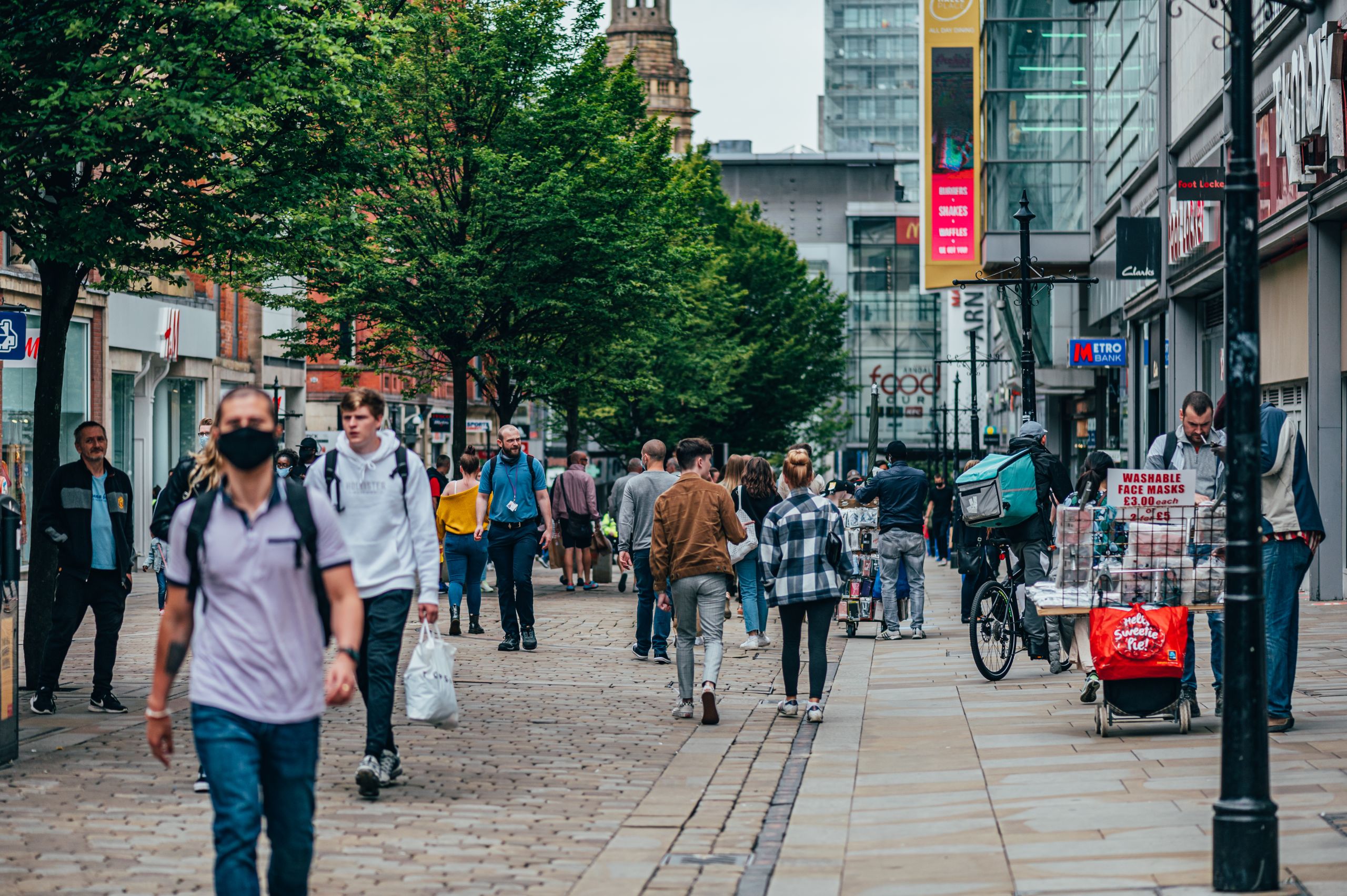
Air pollution is increasingly acknowledged as a major risk for human health. While its effects on the severity and incidence of lung conditions such as asthma have been widely recognised, the impact of air pollution on respiratory infections is often less appreciated. Research shows this has disproportionate effects on different areas of society: low-income communities face increased exposure to air pollutants and increased health risks.
In this article, we outline what is currently understood about the health impacts of air pollutants on respiratory infections and propose how we can engage at-risk communities to develop our understanding and build a resilient solution to the air pollution problem, reducing risks and outcomes on health and the economy.
Air pollution is a healthcare problem
Exposure to air pollutants can cause damage to the body’s cells, generating harmful free radicals that can in turn impair or alter the function of the lungs and immune cells within the lungs. This decreases our body’s ability to fend off respiratory infections such as cold viruses, influenza and SARS-CoV-2 (COVID-19). Fine particulates, or particulate matter (PM), are associated with significant health risks. Studies in China have shown that at least 10% of influenza-related hospitalisations were due to exposure of PM2.5 pollutants (particulate matter smaller than 2.5 microns i.e. over 40 times smaller than the width of a human hair). Similar trends have been seen in England, where exposure to PM2.5 pollutants is associated with a 12% increased risk of severe complications in COVID-19. As well as particulate matter, exposure to NO2 and ozone have demonstrated a negative effect on immunity to respiratory infections. In addition to the direct effects on our bodies, studies indicate that air pollutant particulates can act as a “highway” promoting the transmission of viruses such as SARs CoV-2.
Such observations highlight the urgent need to reduce the incidence of air pollution that heightens both the severity and transmission of respiratory infection. Research is ongoing to grow our understanding of this link, however to successfully understand and combat the air pollution problem, we must meaningfully engage the communities that face the greatest pollution exposure and resulting health impacts.
The disproportionate effect of air pollution on low-income communities
Reports tend to focus on the harmful impacts of air pollution on the elderly and very young, however, it is increasingly evident that there are major disparities in which groups of the population have the highest exposure to the worst pollution. Communities with lower socioeconomic status tend to exhibit the most risk factors for health which collectively impact on life expectancy. These communities also often experience much higher exposure to air pollutants. As a result, low-income communities experience major health disparities driven by these and other mutually reinforcing socioeconomic and environmental factors.
Despite this unevenness in exposure and risk, we still don’t fully understand what pollutants communities are exposed to and the individual factors underlying susceptibility to health problems. Projects such as the Manchester Urban Observatory and citizen science-based projects such as Britain Breathing that map respiratory symptoms to time and geolocation, are tools that can be employed to start bridging such gaps in our understanding. These initiatives should be expanded and championed as useful tools that provide accurate on-the-ground information, while engaging and educating affected communities.
Researchers should also seek to utilise members of these communities to help inform and guide their research into the sources and effects of air pollution. The University of Manchester project Researching Age-friendly Neighbourhoods is an excellent example of effective community engagement in research. Community members were trained as co-researchers and played leading roles in the key sections of the research project – helping to design, deliver and disseminate the research. Employing members of the communities in this function helped develop tangible outcomes rooted firmly in the needs of the community: applying this methodology to research surrounding the air pollution problem is likely to yield similar benefits.
Additionally, a co-benefit of establishing these meaningful partnerships in research and in developing solutions, is building trust within often marginalised communities. This can help promote future healthcare initiatives as well as helping to address the root causes of pollution in the neighbourhoods.
Engaging local communities to promote successful health initiatives
While community engagement has many benefits, the worst-affected communities are often not involved in attempts to address the social inequalities linked to poorer health outcomes. This can lead to a perception that interventions at a community level are ‘done to’ communities, often resulting in mistrust from the same communities that the interventions are seeking to help. The severe and unequal impact of COVID-19 is a pertinent example of this. Areas of lower socioeconomic status have death rates that are doubled compared to areas of higher socioeconomic status, yet residents in these areas are less likely to take up protective vaccination. A poll conducted by the royal society for Public Health showed that just 70% of the lowest earners were likely to say yes to a vaccine for COVID-19.
Place-based, community-centric projects are critical to work with and within communities to investigate root causes of pollution-related issues and co-create solutions. Although, recent steps to fund such partnerships have been made by UKRI and more recently the Welcome Trust, these tend to be short term. Moreover, they don’t provide adequate funding for community engagement and thus are limited in their impact – it can take years to build the trust necessary for an effective partnership. Short-term initiatives don’t always create the legacy needed to affect long-term change further amplifying mistrust. Our work funded by ESRC in the LOOPER project and now UKRI via the pilot place-based research initiative in Brunswick has revealed major concerns about air inequality and health alongside mistrust of institutional motives within the community.
Supporting, developing and enabling community-based champions who have the social networks and reach to exert change is one way to help bridge the gap. Giving such voices a meaningful role within decision-making processes can help keep community needs at the centre of proposed interventions, thus helping to build trust and improve engagement. Unfortunately, current funding models rarely allow for this to any longer-term extent. The British Science Association Community Leaders Programme – which trains individuals to become science ambassadors in their communities and supports them in developing long-term science engagement projects – has been an effective in building engagement with communities that historically have been hard to reach. However, the programme does suffer the drawback of finite funding.
An alternative model for meaningful partnership between local government and marginalised communities could come from The Camden Citizens’ Assembly on the Climate Crisis. The Assembly, led by the Camden Council, brought together over 50 randomly selected residents of Camden to develop an approach for how Camden can best tackle the climate crisis.
It should be a policy priority of local authorities to expand and replicate such programmes that empower residents of marginalised communities to help guide positive change, developing solutions to problems such as air pollution and building community trust.
With COVID-19 accelerating the social-economic divide, there has never been a more critical time to support community-centred research that upskills, empowers and listens to the residents to drive policy changes and affect positive action. Community champion roles and long-term funded partnerships between communities and local authorities can help to involve members of the communities facing the highest exposure and health impacts from air pollution. This meaningful engagement can help build trust with marginalised communities and is essential to allow us to fully understand and solve the problem of dangerous air pollution.
Professor Sheena Cruickshank is an immunologist and Academic Lead for Public Engagement with Research at The University of Manchester.



Polluting the economy: the hidden cost of air pollution
Dr Ron Chan



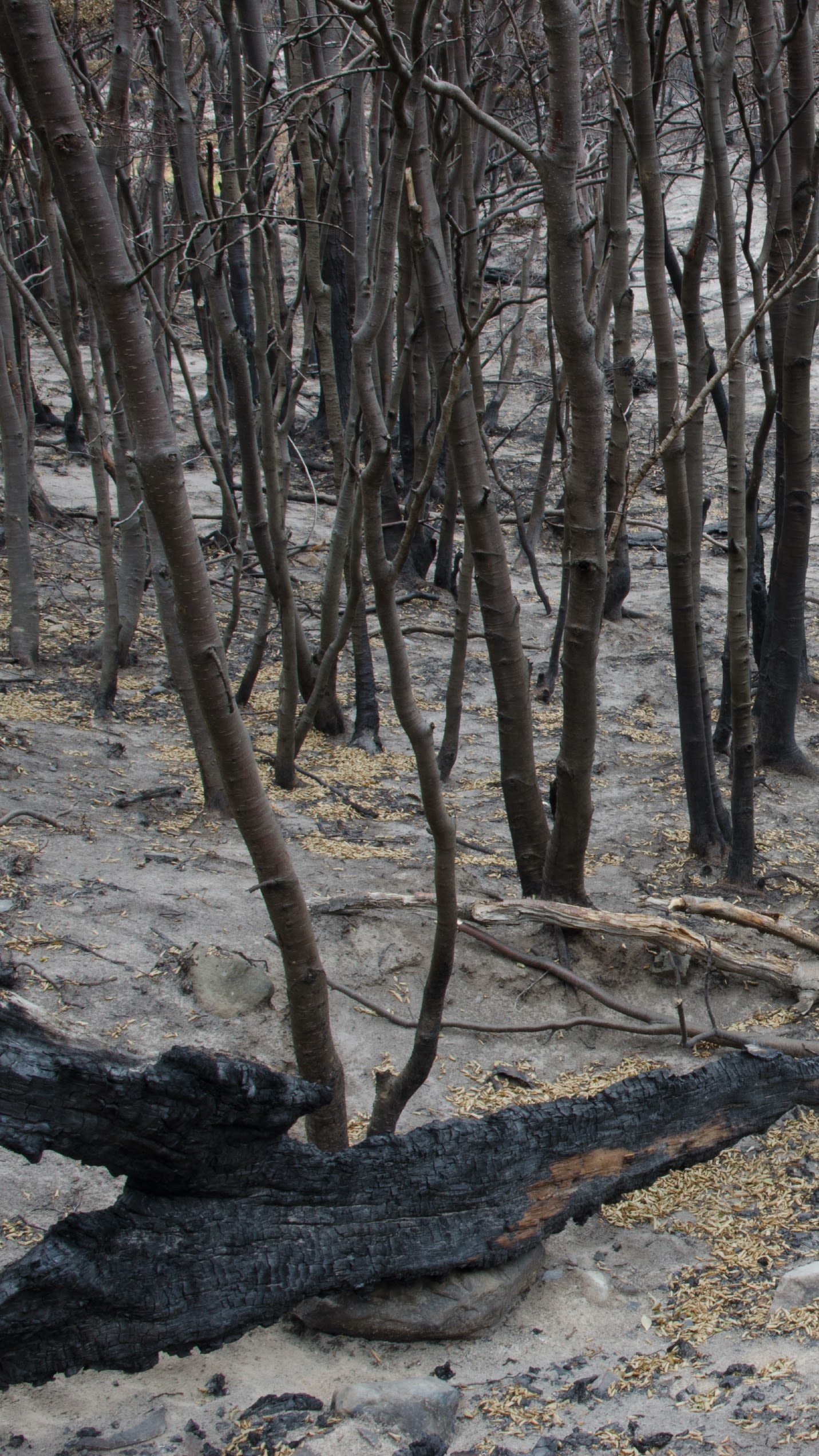
Over the past few decades, air pollution has remained a major environmental issue across the globe. However, approaches to analysing its impact on the economy have been too narrow in focus. Research in economics has largely been focused on studying the economic costs of mortality and morbidity associated with pollution concentration. It is becoming increasingly clear that other factors have significant economic repercussions. Air pollution has been linked to workplace absenteeism, as well as increased incidents of crime and accidents.
It is perhaps not surprising that economists have traditionally focused on health: in most models, health costs dominate the total economic costs calculations as well as the resulting policy recommendations. However, recent empirical evidence suggests that non-health costs of air pollution, especially the effects on the labour market, far exceed what was previously believed. Discounting the labour costs of air pollution means we have allowed too much pollution with existing policies, resulting in significant unanticipated economic impact. It is essential we broaden our approach to quantifying the impacts of air pollution, beyond health-related costs, to allow us to fully understand the scale of the air pollution problem and thus establish policies to address it.
Using wildfires in Chile as a case study, this article explores how air pollution can have large negative effects on the labour force, and how workers experience these impacts unequally depending on the nature of their occupation and their income status. We find that low-income workers suffer more than rich workers; thus improving air pollution will disproportionally benefit low-income households.

Wildfires in Chile
In the past decade, wildfires have been increasing, both in terms of their intensity and frequency around the globe. Climate change is regarded as a significant contributing factor to this increase, causing higher fuel aridity that leads to a higher likelihood for fire. In the summer of 2017, 587,000 hectares of forest – larger than the county of Norfolk – and a small town burned down in Chile and 11 people were killed. Thousands of buildings were destroyed, and it was estimated to have cost the Chilean government more than US$300 million.
Wildfires cause a significant increase in air pollution in the surrounding area; this increase above baseline air pollution cause by traffic and industrial activities allows us to directly study the impact of air pollution on workers. Pollution affects economic output through a variety of channels in the labour market. We can measure this impact by looking at changes in the number of hours worked, changes in the productivity of the labour force and through changes unrelated to the labour force. Our research suggests a larger than expected impact in economic output when considering the number of hours and labour productivity in tandem.
Workers exposed to wildfires in a given week showed an average reduction in working hours of 2–3%. If the worker belongs to the agricultural sector, or has to complete tasks outdoors rather than indoors, the negative impact of wildfires can go up to 4–5%. Wildfires also had a greater effect on workers who worked less than a usual working week for climatic or health reasons – this, at least indirectly, suggests that health reason is the primary contributing factor for the observed absenteeism. Our studies on the differential effects of wildfire-related air pollution on workers with a different socio-economic status suggest that the effect is the strongest for low-income households. This suggests that policies targeting at reducing air pollution are “progressive” – the poor benefit more than the rich, should air pollution and wildfires be mitigated.

What does it mean for policy?
Research at The University of Manchester with colleagues Veronica Vienne and Dr Martino Pelli at The University of Sherbrooke has demonstrated that air pollution can lead to a reduction of labour hours, productivity, and subsequently economic output. A more comprehensive study on the economic impact of air pollution is needed to quantify the non-health costs and prevent overestimating acceptable levels of air pollution, and this allows policymakers to re-examine their air pollution standards. The detrimental effect of air pollution is also found to be concentrated on workers in low-income households and neighbourhoods. In the short term, the government should put forward policies to target these affected workers; while in the long term, this chapter also calls for environmental equity to reduce such income inequalities, by targeting environmental protection in low-income neighbourhoods. Air pollution monitoring stations are usually located near metropolitan areas, and an improvement on how these data are collected in these neighbourhoods will be imperative in achieving this objective.
The negative impact of air pollution on the economy appears to focus on workers with outdoor tasks. A standard for real-time monitoring of air pollution and its impacts on workers should be introduced for industries involving substantial outdoor work, such as agriculture and construction. Construction workers in particular, often have to work near traffic and industrial activities with high concentration of air pollution. Leveraging real-time monitoring technologies can help reduce both the environmental impact of the associated work activities and the unfavourable effect of air pollution on workers.
Ron Chan is Lecturer in Environmental Economics at The University of Manchester.
Indoor and outdoor wood burning needs a new way of thinking
Dr Amanda Lea-Langton

Poor air quality, often from combustion is associated with a wide range of adverse health impacts including cardiopulmonary illnesses and cancer. In urban areas, the main pollutants are in the form of nitrogen oxides (NOx) largely due to vehicle exhausts. There is increasing concern regarding emission of fine particulate matter in the form of sub-2.5-micron particles (PM2.5). These particulates are known to penetrate the lungs and the smallest can cross the cell barrier into the human bloodstream. Older diesel vehicles were historically the main source of urban PM2.5 but biomass burning is emerging as a significant source.
The World Health Organisation has clear guidelines on what the legal limits should be for various air pollutants, including PM2.5, but the UK Government currently does not follow these recommendations since it follows the EU PM2.5 compliance metrics which are currently bound in law. This has limits on PM2.5 four times higher than the WHO suggested maximum limit.
It is becoming increasingly clear that health impacts of PM2.5 are being identified at concentrations less than the EU limit values and hence there needs to be a move to lowering the UK limits to those set at the lower WHO recommended levels.
Increasing popularity of wood stoves and outdoor fires
Biomass burning in urban areas has become an increasingly significant source of PM2.5 emissions, due to rising popularity of biomass boilers, wood-burning stoves, barbeques and bonfires. This popularity is likely to continue, especially with various regional and national lockdowns limiting social interactions to outdoors during colder months. The contribution of wood-burning stoves to air pollution in urban spaces has been explored but is not well understood. There is a lack of accurate data reflecting real world use of these stoves. The tests that have been conducted also examined older appliances under controlled conditions that do not reflect how households currently use their appliances. While modern wood-burning stoves are more clean-burning than open fires or older technology stoves, more research is ongoing to uncover their true impact.
Similarly, to the clean-up of diesel emissions, there is an ongoing effort to reduce emissions from wood-burning stoves. Newer designs incorporate technologies including particulate traps and catalysts to clean up the flue gases. New Ecodesign legislation will come into effect 1st January 2022, which will regulate both the efficiency and significantly restrict emissions of wood-burning stoves in use in the UK. It will also become illegal to manufacture and sell non-compliant stoves from this date. Many UK manufactures and suppliers have invested heavily in meeting or exceeding these air quality standards and ClearSkiesmark provides a certification of appliances that meet or exceed Ecodesign emissions and energy performance criteria.
However, this new legislation will not impact existing stoves in households already installed around the country. A retrofitting scheme could allow older less efficient and more polluting stoves to be replaced with newer, safer designs, which can usually be installed into existing fireplace and flues.
What we burn, and how we burn it, matters
How we use our woodburners and what we burn in them can make a big difference to the pollutants that are released into the air. User behaviour and fuel quality can have substantial impact on the emissions from wood-burning stoves. Ongoing work at The University of Manchester has shown that emissions vary considerably according to fuel loading and the inlet air setting. The certification testing for stoves in the current regulatory framework is set on a fixed duration and a fixed mass of fuel; this does not accurately reflect real world conditions. In typical household use, stoves are ignited from a ‘cold start’, reloaded repeatedly, and left smouldering overnight – all of which affect the rate of emissions.
The moisture level of the wood will also affect the amount of PM2.5 emitted. High moisture woods are associated with higher volatile species particulate matter emissions. Because of this, Defra implemented the ‘Ready to Burn’ Scheme as recognised in The Air Quality Regulations 2020. Firewood and briquettes purchased with its logo are dry enough to burn immediately at less than 20% moisture. Work at The University of Manchester suggests optimum moisture levels are actually between 10% and 18% as kiln-dried wood has also been seen to have higher PM emission rates in some stove types.
User behaviour can also impact the indoor air quality associated with stove use. On reloading the stove, the user should open the door a fraction, allowing the air pressure to stabilise before fully opening the door. If operated correctly, the natural draft of air from the room will carry any combustion emissions through the stove and up the flue. However, in real world applications, many users pull the door open too rapidly. This pulls a portion of the smoke and particulate emissions into the room, hence increasing indoor air PM2.5 levels. Stoves that are operated sub-optimally can be a source of indoor pollution. It is worth also noting that other significant sources of poor indoor air quality include cleaning products, candles, incense burning and cooking meat – and all of these can cause worse indoor air quality than the correct use of a wood-burning stove.
One route to promoting improvements to how people operate their woodburners could be from the stove installers themselves, ensuring that appropriate training is given and that the risks of using poor quality fuel are properly shared.
Wood-burning stoves have become more popular in households for a variety of reasons, from purely aesthetic, to a desire to have ‘off-grid’ heat options as a non-fossil fuel alternative. However in some cases, especially in densely populated urban populations, the emissions have caused noticeable local impact. A place-based approach to wood-burning stove regulation could be explored – to improve air quality in densely populated areas and avoid emissions sitting in valleys where air movement can be stagnant depending on atmospheric conditions. Schemes could be introduced to encourage users within specific geographical regions, to retrofit cleaner-burning eco-design compliant units in place of open fires or older design stoves.
While indoor stoves are seeing improvements stemming from regulations and technological advancements, it’s likely that exposure to particulate emissions from outdoor biomass burning will become a more significant issue. As we spend more time outdoors to facilitate the ‘new-normal’ of living with COVID-19, personal exposure to emissions from barbeques, fire pits and chimineas are of increasing concern. Unlike the relatively controlled combustion in a stove, these outdoor fires are largely inefficient and highly polluting. These emissions are formed directly next to the user and others, rather than removed via a flue, and so the personal exposure is much higher.
There is no safe level when it comes to the amount of pollutants in our air, especially in our homes, but there are many ways to make the quality of the air around us cleaner. The WHO recommendations are the minimum that we should be striving toward in the UK, and there is much that could be done to improve people’s awareness of the risks that air pollution represents. This isn’t a problem that can be fixed through one simple solution, and it will need industry, local and national government to work closely with academia to ensure the best available evidence is being used to inform policy decisions.
Amanda Lea-Langton is a Senior Lecturer in Bioenergy Engineering at The University of Manchester and member of the Tyndall Centre for Climate Change.



Using big data to tackle the air pollution problem
Dr David Topping, Professor James Evans and Dr Thomas Bannan

The increasing amount of data collected on the environment and how we conduct our lives has the potential to dramatically transform policy design and implementation, particularly in the field of air quality. The size of the global datasphere is predicted to double less than every two years. Each day, thousands of monitoring stations around the world gather vast quantities of data on air quality of varying veracity and detail. Over a long period of time, the scientific community has developed modelling platforms that simulate the emission, transport and evolution of pollutants in the atmosphere. New, data driven platforms – utilising near real-time data – offer a tremendous opportunity to predict quantified impacts of proposed policy interventions and thus determine interventions with the greatest outcomes on public health, the environment and the economy.
Big data in action
‘Digital Twins’ show great promise as a tool for informing air quality policy. A Digital Twin is a virtual counterpart of a given system. It uses near to real-time data to provide a snapshot of how the system is responding to multiple stressors. This can be used to assess how the system may respond to changes in conditions. What happens if a planned traffic intervention leads to increase traffic through another neighbourhood? Can we integrate transport data and personal mobility data into a near real-time model of personal exposure for population exposure estimates? These are the sorts of questions that can be answered utilising Digital Twins but might have otherwise been difficult to answer using traditional numerical models.
The smart city movement also provides numerous illustrations of the potential of big data-driven policy. Smart cities have been in vogue for many years, facilitated by the boom in the Internet-of-Things market (IoT). Managed static networks of sensors or distributed collections of personal devices monitor the environment in which people spend their time. Data from these networks is then used to design data-driven services for the public. For example, the monitoring of a transport system can include the use of image recognition cameras to detect vehicle type and volume. Ancillary data on public transport capacity, Bluetooth mobility tracking devices, parking spaces and public footfall provide a comprehensive picture on where and how the network responds to various stressors. This can be used to optimise traffic flows and minimise traffic-related air pollution around schools or hospitals.
There is also the potential to use the growing information about our air quality to better inform people about potential impacts of the choices they make day to day. There are already a multitude of apps that can give expected levels of air quality that an individual might be exposed to, which make influence how that individual travels to work, perhaps spending more time walking or cycling on clearer days. Likewise it might influence the route taken on a commute or school run.
A critical shortage in digital skills
Air quality is complex, and results from a variety of interdependent factors. A significant evidence base is required to build accurate models. For this evidence base to be useful, we need a skilled workforce across national and local governments that is capable of designing, implementing and analysing big data models.
The key barrier to UK implementation of big data techniques for air quality policy is a digital skills shortage across the public sector. To take advantage of the opportunity afforded by modelling platforms such as Digital Twins, we need trained specialists with the capacity to help drive digital innovation. In general, local authorities do not currently employ enough of these professionals, and the analysts they do employ often almost exclusively focus on statutory reporting.
Bridging this skills gap should be a specific priority for Defra as well as local authorities responsible for air quality. Data innovation specialist roles must be established. To fill these roles, there must be an increase in targeted recruitment from the existing pool of skilled workers in the UK. This pool of data specialists must be expanded, both through upskilling current employees and through equipping the UK population with improved data skills.
The recent Skills for Jobs white paper emphasises importance of digital skills in modern workforce; progression to advanced technical study is a core purpose of the proposed national skills and educational reforms.
In the National Data Strategy, the government commits to training 500 analysts across the public sector in data science by 2021, through the Data Science Campus. Manchester’s Digital Strategy is fantastic example of a local authority digital framework that puts innovation and ‘smart people’ – an upskilled, digital literate population and workforce – at the forefront. There is already a great deal of misinformation and less than trustworthy data available, especially regarding air quality sensors, and a more digitally literate procurement strategy at both local and regional levels would help by not only saving money, but also avoiding decisions being taken based on less rigorous data.
The Fast Track Digital Workforce Fund in Greater Manchester is a great scheme that seeks to address locally identified digital skills gaps, and provides accessible pathways into digital careers for underrepresented groups. Such programmes should be supported and expanded to offer specific training on Digital Twins, with a view to expanding to a national Data Twins training programme. Specifically, it is vital that as developments of hybrid and machine learning driven representations of our air come from various sectors, there should also be training in validation protocols and a fundamental understanding of model construction. Local authorities are already operating under immense budget pressures, and connections and partnerships with Universities are a clear opportunity for a mutually beneficial relationship.
Other barriers to big data
Critical digital infrastructure is required to support Digital Twins, with open standards playing a central role. Simply put, we need to gather a lot of data and the data needs to be of a reasonable quality. Unfortunately, there is a considerable disconnect between commercial low-cost air quality monitoring solutions designed for dense networks and the technologies used in an academic setting. Research grade instrumentation not only captures information on pollutant concentrations and trends but quantifies a chemical signature of our atmosphere. This information is important in resolving changes in emissions and processes. However, the gulf between the financial entry point and ease of erecting dense networks of commercial solutions rather than academic tends to dictate scalable network design. This includes not only the cost per unit, but required installations, maintenance, quality control checks and decommissioning.
There are significant concerns surrounding quality control, ownership and differences in calibration procedure for commercial air quality monitoring equipment. We must find solutions that combine the academic rigor of facilities traditionally maintained by the academic community with low-cost network solutions. A framework must be developed that mandates benchmark equipment quality, outlines a common calibration procedure and ensures transparency over equipment and data ownership.
Mapping air pollutants and modelling the chemical and physical processes they undergo allows us to predict quantified impacts of proposed policy interventions. Data-driven modelling and Digital Twins may well be the most efficient route to decision making in an evolving environment. To deliver on this tremendous opportunity, we need to grow the evidence base surrounding air pollution and set firm standards for its quality; we must also upskill the workforce across local authorities and Defra to bridge the digital skills gap.
David Topping is Senior Research Fellow at the School of Earth and Environmental Science, The University of Manchester.
James Evans is a Professor in Geography and current Head of Department at The University of Manchester.
Thomas Bannan is a Research Fellow at the School of Earth and Environmental Science, The University of Manchester.
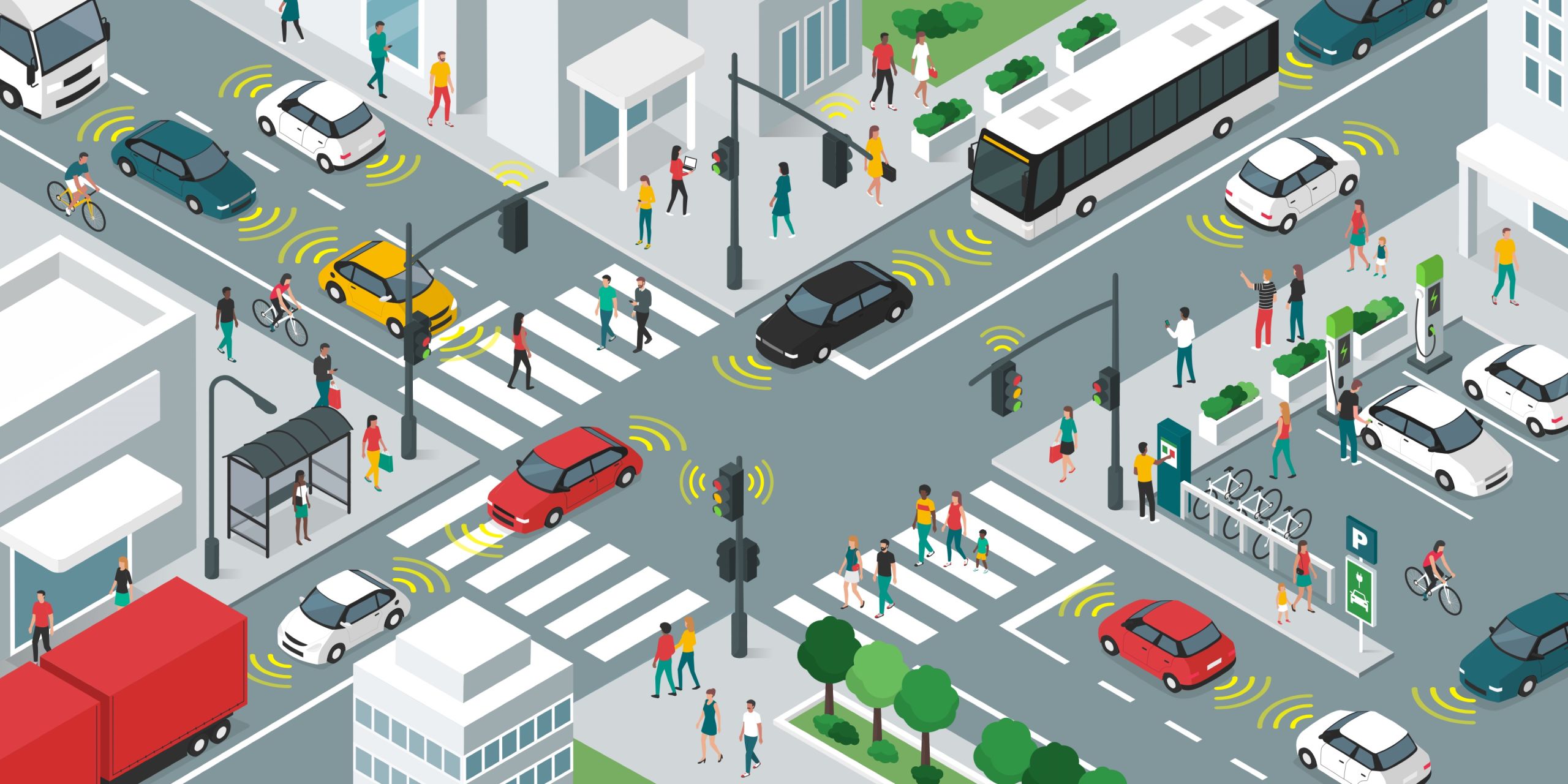


Tracing the sources of harmful particulates
Dr Nicholas Marsden
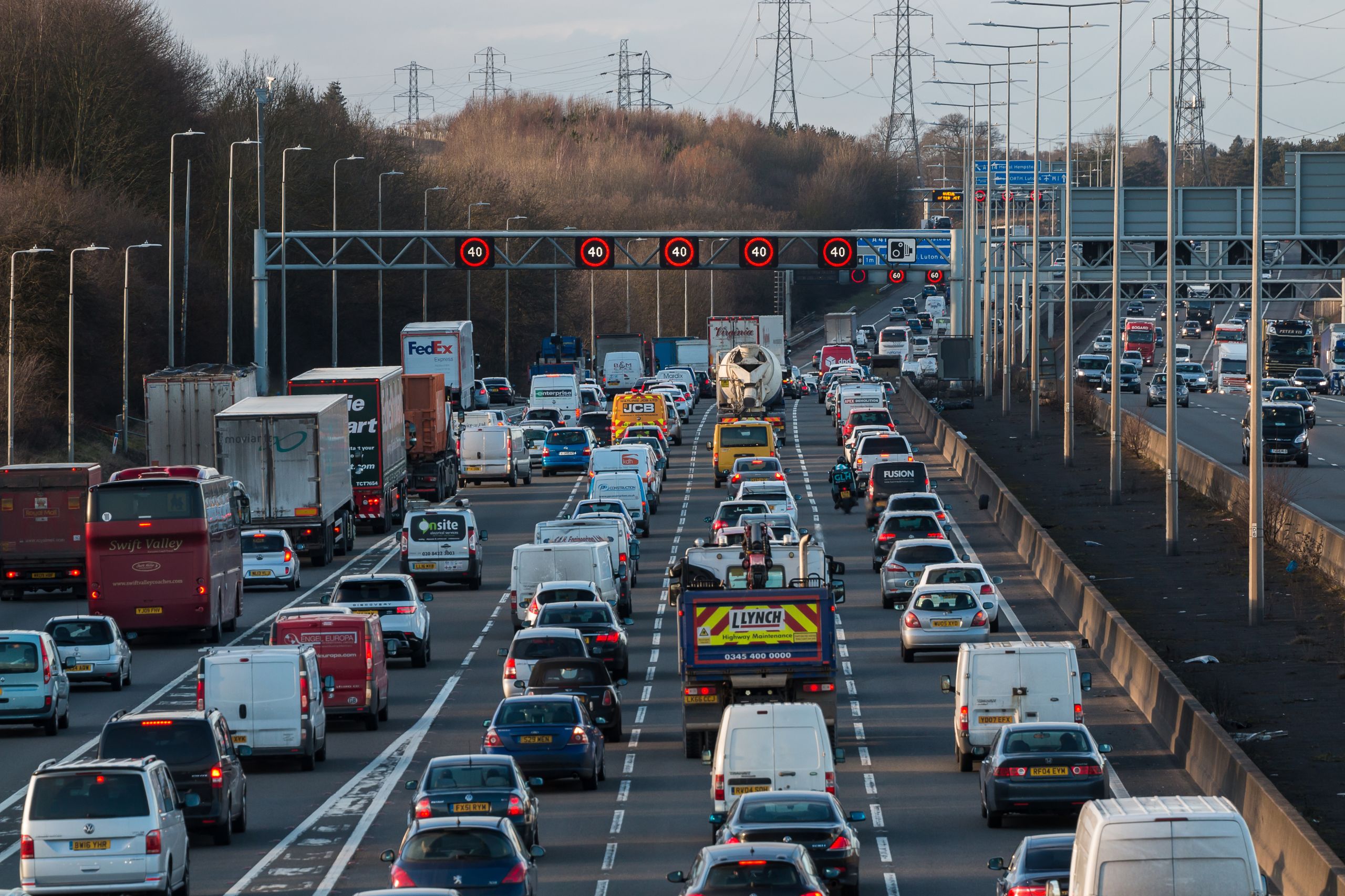
There is a long-established link between poor air quality and negative health outcomes such as cardiovascular disease, respiratory disease and impaired immune system. However, the actual clinical mechanisms which lead to disease are not well understood. This is a significant problem when examining the causal link between high concentrations of fine particulate matter (PM) and respiratory disease. There is a huge volume of environmental data available that enables the correlation between high concentrations of PM and the occurrence of certain disease in the community. However, the term ‘PM’ encompasses a wide range of pollutants of varying composition, size and particle mixing states. The simplification could be very detrimental to understanding and reducing the health impacts of air pollution.
Lessons from the automotive industry
In recent years, there have been successful campaigns to reduce the exhaust emissions from vehicles. This has occurred in an industry that is well regulated, uses similar technologies – combustion engines that use a common fuel type. The amount of diesel and petrol consumed and the characteristics of the vehicle fleets is well known. The effectiveness of regulation to reduce emissions can be accurately modelled and verified with ambient measurements. This is done in the current framework of reducing NOx and PM, as well CO2 for climate change.
This is because the quality of air at a particular location is a consequence of a complex interaction of local and regional emissions, meteorological conditions and atmospheric processes that transform the primary emissions both chemically and physically. For example, volatile organic compounds (VOC) emitted form vehicle exhausts are transformed to secondary organic aerosol by condensation and oxidation in the atmosphere. Consequently, it is difficult to attribute poor air quality at a certain location on a particular day to a particular source. However, because vehicle exhaust emissions are ubiquitous in the environment and sufficiently long lived, there is a clear path form reducing emissions to improving air quality.
Whilst the effort to reduce PM for vehicle exhaust emission can be viewed as relatively successful, the poor health outcomes associated with air quality will not end with the reduction in traffic emissions. Domestic and industrial consumption of solvents and chemicals is increasing rapidly and is becoming the dominate source of VOC in the environment, as vehicle exhaust emissions continue to decline. This represents a different challenge as it involves a much wider range of industries. Additionally, the routes to exposure are more diverse, ranging from exposure in the workplace to exposure in the home. If we are to develop resilient solutions that combat poor air quality without significantly impacting industrial competitiveness and consumer choice, the rather blunt tool of reducing all PM will not be sufficient.
Not all PM is created equal
The key to effective regulation of air quality in the future environment is understanding that all PM is not equal; some types are more harmful than others. The sources, exposure routes and toxicity of the more harmful types are not well understood. This is partly because measuring aerosol properties is very challenging. Current techniques that measure the properties of PM pollution are expensive and require expert operators. Moreover, they do not provide enough detail of the entire composition of individual particles. Consequently, it is difficult to link the harmful aspects of specific types of PM to adverse effects in the human body. This requires complex experiments involving multi-disciplinary teams of medical, clinical and aerosol scientists.
More of these types of experiments will lead to a better definition of the specific properties of PM that are harmful. This will inevitably lead to the next challenge: how to efficiently regulate the source and exposure of a new set of PM properties in industry and the wider environment. Such regulation can only be introduced if an effective monitoring network is available.
Building a resilient and effective PM monitoring network
Recently, a multitude of low-cost air quality monitors have become commercially available. These products offer the opportunity to measure current air quality metrics such as fluxes of PM 2.5, PM 10 in a more diverse set of environments than traditional air quality monitoring networks. We must prioritise the development of instruments to measure the more specific PM properties identified in collaborative research. The simplified, commercially-available air quality instrumentation is a route to a wider air quality monitoring network that is required in the future economy.
Although PM pollution can be greatly reduced, it cannot be eliminated entirely: most human activity creates it and a great deal of it is natural. The challenge is how we eliminate the most harmful PM whilst maintaining the competitiveness of industry and respecting the needs of society. Fundamental to this will be cooperation of researchers, industry and regulators in the development of new monitoring technologies that will permit smarter regulation around specific types of PM. This will contribute to reducing health impacts, improving environmental outcomes and maintaining our competitiveness as a world-leading economy.
Nicholas Marsden is Instrument Scientist at The National Centre for Atmospheric Science (NCAS) and is embedded in the Department of Earth and Environmental Sciences at The University of Manchester.


Analysis and ideas on tackling air pollution, curated by Policy@Manchester.
With special thanks to our contributors:
Grant Allen is Professor and Programme Director of Environmental Science at The University of Manchester.
Thomas Bannan is a Research Fellow at the School of Earth and Environmental Science, The University of Manchester.
Ron Chan is Lecturer in Environmental Economics at The University of Manchester.
Hugh Coe is Head of School and Professor of Atmospheric Composition at The University of Manchester and Chair of the UK Local Organising Committee for the Future Earth Global Research Project International Global Atmospheric Chemistry (IGAC). He also chairs the joint NERC/Met Office FAAM aircraft operations committee and is a current member of the NERC FAAM Board.
Professor Sheena Cruickshank is an immunologist and Academic Lead for Public Engagement with Research at The University of Manchester.
James Evans is a Professor in Geography and current Head of Department at The University of Manchester.
Amanda Lea-Langton is a Senior Lecturer in Bioenergy Engineering at The University of Manchester and member of the Tyndall Centre for Climate Change.
Nicholas Marsden is Instrument Scientist at The National Centre for Atmospheric Science (NCAS) and is embedded in the Department of Earth and Environmental Sciences at The University of Manchester.
Martie van Tongeren is Professor of Occupational and Environmental Health at The University of Manchester.
David Topping is Senior Research Fellow at the School of Earth and Environmental Science, The University of Manchester.
All opinions and recommendations made by article authors are made on the basis of their research evidence and experience in their fields. Evidence and further discussion can be obtained by correspondence with the authors; please contact policy@manchester.ac.uk in the first instance.
Read more and join the debate at: blog.policy.manchester.ac.uk
www.policy.manchester.ac.uk
@UoMPolicy #OnAirQuality
June 2021
The University of Manchester
Oxford Road, Manchester
M13 9PL
United Kingdom
The opinions and views expressed in this publication are those of the respective authors and do not necessarily reflect the views of The University of Manchester.
